This post contains affiliate links for products we love. Fusion Craftiness earns a small commission on these links at no cost to you.
Haleem is a popular stew from India, the Middle East and Central Asia. Traditionally made with grains, meat and pulses, each region and family add their own signature touches to the dish. Bold flavors come from popular spices and aromatics. The stew is mashed or blended, releasing the starches and then simmered into a thick, rich stew. This recipe is easy to make and is perfect for both beginner and seasoned home cooks.

As an Amazon Associate and an affiliate of other programs, this website earns from qualifying purchases.
What is Haleem?
Haleem is a thick stew made from four main components; grain, meat, spices and liquid. Popular grains include wheat and barley although depending on the region, rice can be used also. Beef, lamb, goat or chicken is typically used, never pork. Spices used are heavily dependent on the region and preferences of the family cook. Liquids frequently used are water, broth or milk or a combination of the three.
Due to its popularity and nutritional value, Haleem is a popular dish to break the fast during Ramadan. It is also a favorite among Persian Jews to prepare before Shabbat, and left to stew on low heat overnight.
How to Eat Haleem
What to serve with Haleem is again a matter of region and personal preference. Some popular garnishes include fresh herbs such as mint, parsley or coriander. A topping of fried onions, sliced chilies or ginger, or fresh lemon juice is common. You may find this served along with rice or flatbread such as Naan or Mana’eesh.
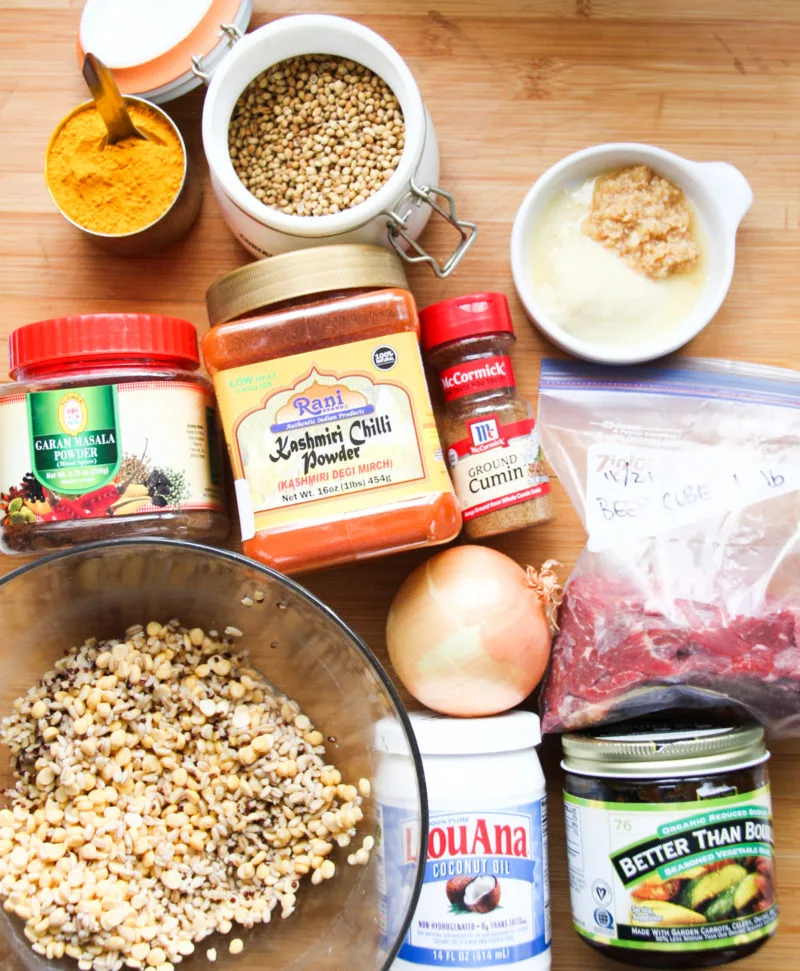
Frequently Asked Questions
WHAT DOES HALEEM TASTE LIKE? – Haleem tastes like a spicy, earthy stew with complex flavors. It has a thick, almost chewy texture and great mouthfeel. Fresh herbs or lemon juice add a freshness at the end.
HOW HEALTHY IS HALEEM? – Haleem is full of protein, vitamins, minerals and antioxidants. Depending on how you make it or what you serve with it will determine how healthy it is to eat. Serving this hearty stew with a salad instead of white rice or naan can decrease the carbohydrate load in this meal. By using barley instead of white rice, you can also decrease the carbs.
WHY IS HALEEM FAMOUS? – Originally an Arabic dish, it has migrated to Hyderabad, India during the Mughal period via Iran and Afghanistan. The first recipe of Haleem which was then called Harees, is mentioned in a 10th century text. As mentioned previously, due to its heartiness and nutritional value, it is often used to break the fast during Ramadan. Another popular stew during Ramadan is Moroccan Harira Soup.
WHAT TYPE OF MEAT CAN I USE WHEN MAKING HALEEM? – You may use chicken, goat, beef or lamb to make it a classic Haleem. If you wish to make it vegetarian, simply use more lentils or another legume such as fava beans.
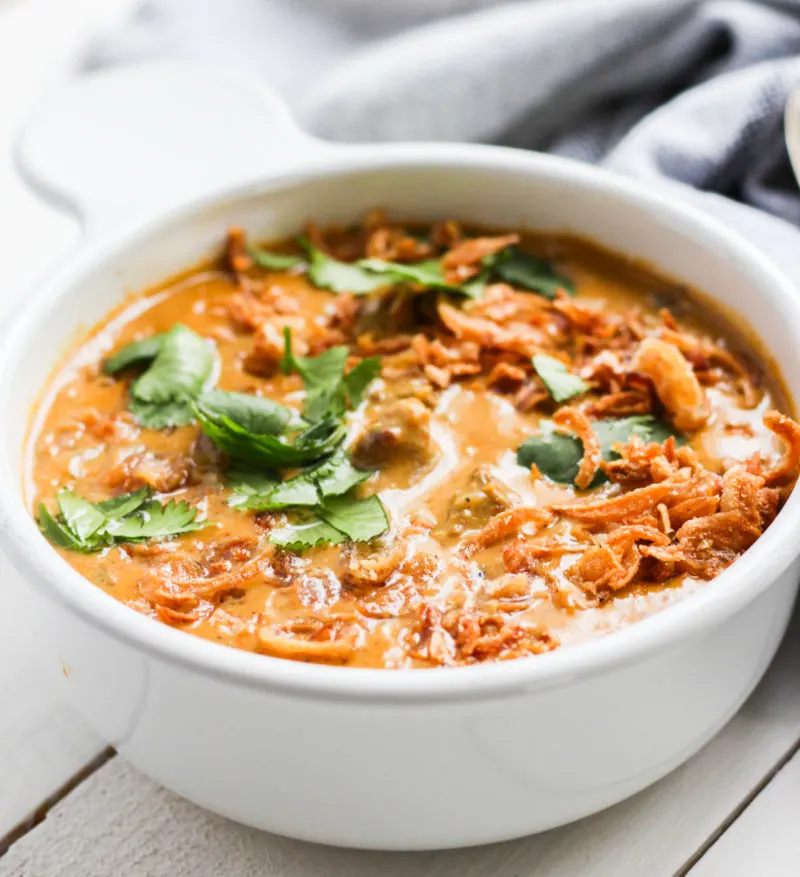
How to Make Haleem











CONFUSED ABOUT THE DIFFERENT CHILI POWDERS? I’ve got the details in my article What is Chili Powder?
Curious about what is in an Indian cook’s pantry? I made a free printable just for you. If you are just diving into Indian cooking, this Indian pantry list will be helpful to you. You probably already have some of these ingredients. Pro-tip, spices and sometimes vegetables, in an Indian market are much cheaper than at the supermarket.
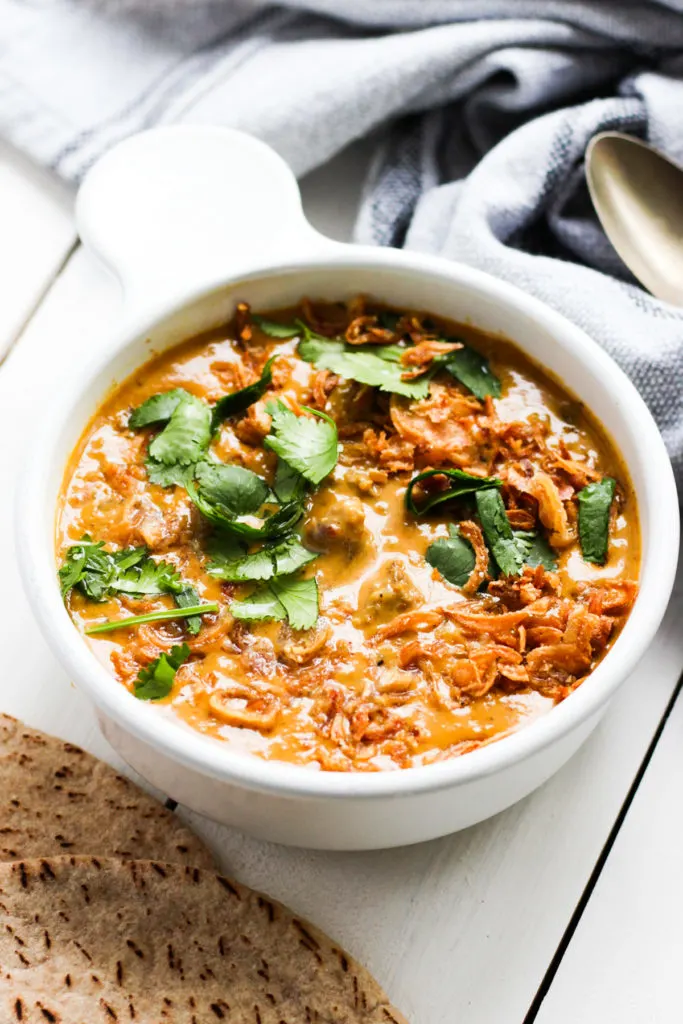
Did you make this recipe? Don’t forget to rate the recipe and comment below! Take a picture and tag us @FusionCraftiness #FusionCraftiness on Instagram for a chance to be featured in our Insta Stories:)
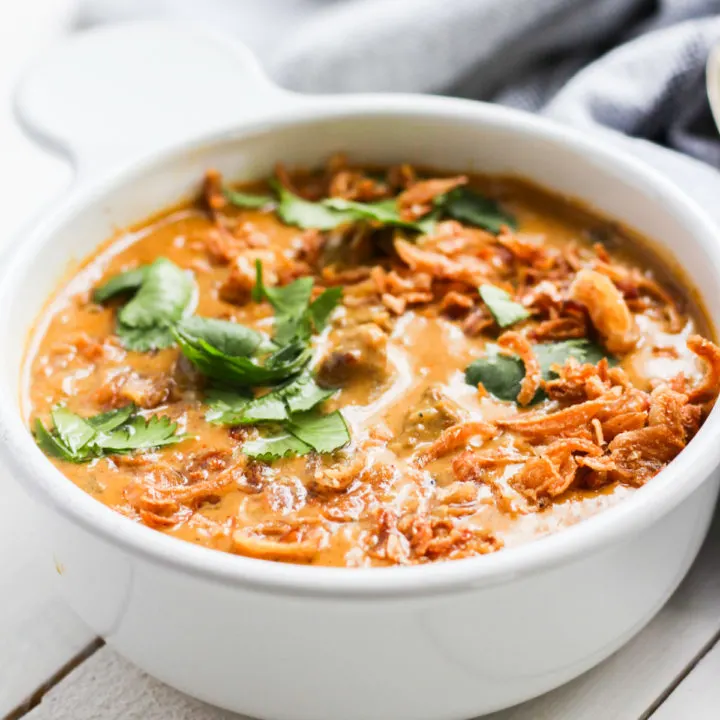
Beef Haleem Stew Recipe
A traditional Persian stew seasoned with aromatics and spices and thickened with grains and pulses. Lamb is typical but can also be made with beef or poultry.
Ingredients
- 1/2 cup coconut oil, divided
- 1 lb beef cubes
- 1 large yellow onion (1 1/2 cups), diced
- 1 Tbs minced ginger
- 1 Tbs minced garlic
- 2 tsp garam masala
- 1 Tbs chili powder (such as Kashmiri, Aleppo, Gochugaru or your favorite type)
- 1 tsp turmeric
- 1 tsp ground coriander
- 1/2 tsp ground cumin
- 6 cups broth
- 1/3 cup bulgur
- 1/2 cup lentils
- 1/3 cup pearled barley
- 12 oz evaporated milk (may substitute yogurt)
OPTIONAL GARNISH
- cilantro, parsley, fried onions, lemon wedges, chili slices
Instructions
- In a large dutch oven or soup pot, add half of the oil and heat over medium. Add beef cubes and spread evenly. Brown on all sides, remove from pan and refridgerate.
- Add the remaining oil and onions. Stir onions with a wooden spoon while scraping the bottom of the pan to release the brown bits leftover from browning the meat. Cook for several minutes until onions are soft.
- Add garlic, ginger and spices. Stir constantly to prevent the spices from burning. After one minute add broth, bulgur, lentils and barley. Stir, scraping the bottom to release any remaining spices and brown bits. Bring to a simmer, cover with lid, reduce heat to low and simmer thirty minutes.
- After thirty minutes blend the soup with an immersian blender until the soup appears thick and velvety. Alternatively you can scoop half of the soup into a food processor or blender (be careful to vent the lid if using blender or food processor with hot liquids), and add back to the pot.
- Add beef back into soup, add milk and bring to a simmer, cover and reduce heat to low. Simmer 1 hour.
- Garnish as desired.
Notes
- This soup will keep in fridge up to 5 days.
- This soup can be frozen up to 6 months.
- Feel free to use yogurt which is traditional instead of evaporated milk. I use evaporated milk instead of yogurt in hot soups because it doesn't 'break' like yogurt does.
Recommended Products
As an Amazon Associate and member of other affiliate programs, I earn from qualifying purchases.
-
 Healthy Cooking Utensils Set - 6 Wooden Spoons For Cooking – Natural Nonstick Hard Wood Spatula and Spoons – Uncoated and Unglued – Durable Eco-friendly and Safe Kitchen Cooking Tools.
Healthy Cooking Utensils Set - 6 Wooden Spoons For Cooking – Natural Nonstick Hard Wood Spatula and Spoons – Uncoated and Unglued – Durable Eco-friendly and Safe Kitchen Cooking Tools. -
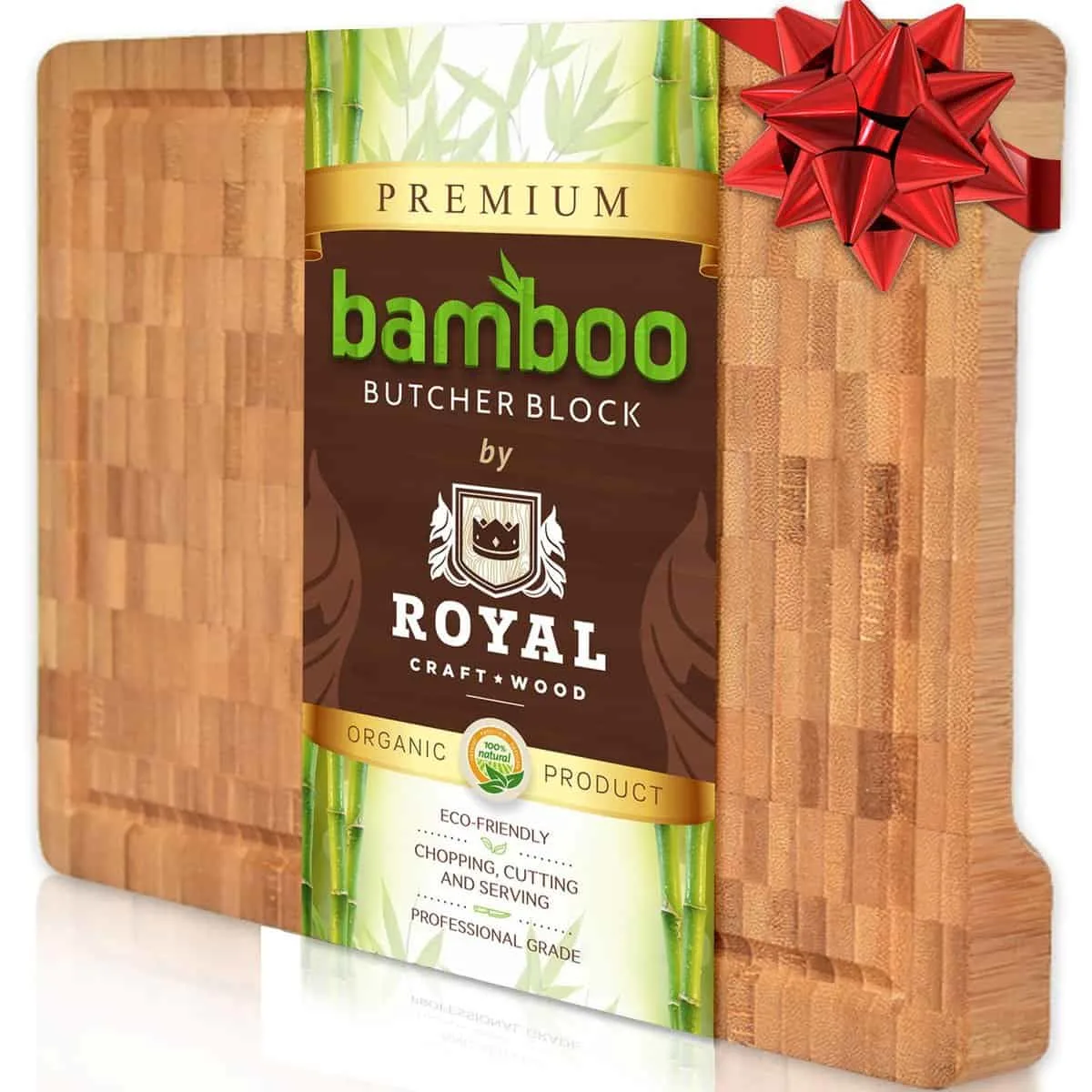 Thick End Grain Cutting Board - Butcher Block for Kitchen with Juice Groove and Handles by Royal Craft Wood - Walmart.com
Thick End Grain Cutting Board - Butcher Block for Kitchen with Juice Groove and Handles by Royal Craft Wood - Walmart.com -
 Cuisinart DLC-10SYP1 Food Processor, 7 Cup, White
Cuisinart DLC-10SYP1 Food Processor, 7 Cup, White -
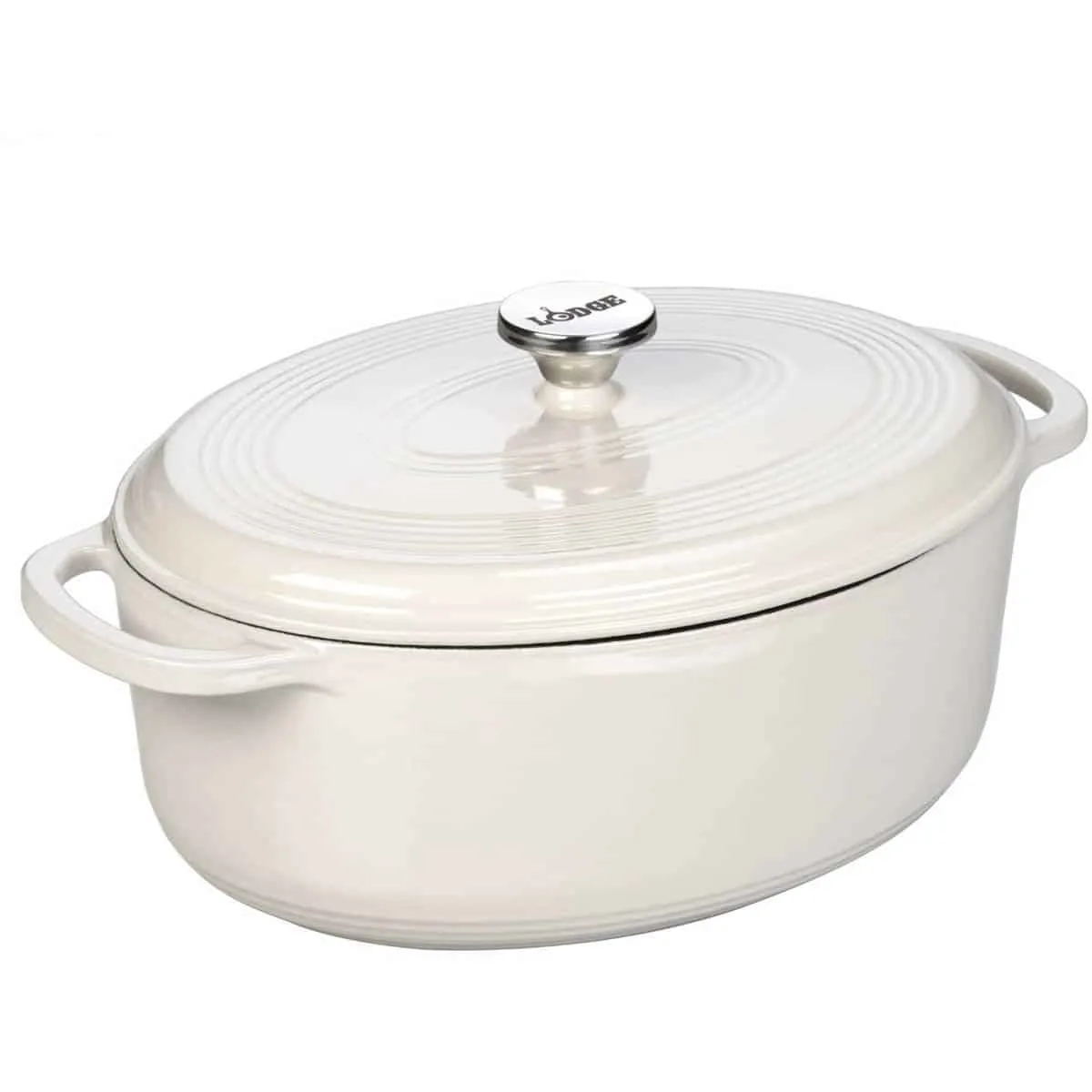 Lodge 7 Quart Enameled Cast Iron Oval Dutch Oven in Oyster White EC70D13 - Walmart.com
Lodge 7 Quart Enameled Cast Iron Oval Dutch Oven in Oyster White EC70D13 - Walmart.com
Nutrition Information:
Yield: 9 Serving Size: 1Amount Per Serving: Calories: 463Total Fat: 30gSaturated Fat: 17gTrans Fat: 0gUnsaturated Fat: 9gCholesterol: 72mgSodium: 556mgCarbohydrates: 23gFiber: 3gSugar: 9gProtein: 26g
RESOURCES
Times of India – The Story of Haleem
Wikipedia – Haleem

Melinda
Tuesday 26th of September 2023
When do you add the milk or yogurt? As a garnish?
Tina
Wednesday 27th of September 2023
Hello Melinda, add the milk at the end right before the final simmer. Thanks for this question!
David
Friday 15th of July 2022
I had this for dinner! It was great. I loved this hearty stew that is flavorful and has great bite. Wifey loved it too!